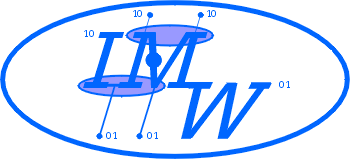INSTITUTE OF MATHEMATICAL ECONOMICS


Wulf Albers
Abstract
It is a well known phenomenon that
spontaneous numerical responses preferably select numbers that have a
simple structure. The theory of prominence (see ALBERS 1997) permits to
analyse this structure, and to define measures of simplicity of numbers.
Adequate measures of simplicity should permit to predict frequencies
with which numbers are selected as responses, assuming that numbers that
'simpler' numbers are responded more frequently.
This paper gives such a measure, and compares the predictions with an
extended set of numerical responses, data which were answers on the
question to `give information about prices of different articles for a person
who does not know the prices in Germany'. The data cover a range from
pennies (price of a candy) to hundred thousands of marks (price of a
house).
According with the theory of prominence it could be shown that the
observed frequencies show 'decimal consistency', i.e. the relative
frequency of selecting a response $ does not depend on the level, but
only on the relative structure of the response, and this structure is
not changed when a number is multiplied by ten. More precisely, the
concept predicts that the logarithm of the frequency of a number is a
linear function of the perceived 'complexity' of the number.
The concept is based on the theory of prominence, the idea is that every number
is perceived as a sum of the full step numbers {a*10^i: a
Î {1,2,5}, i integer}, where all coefficients are 0, +1, or
-1, and it is not allowed to select +5-2 or +5+2 as the last two steps
of a presentation. The smallest number with coefficient unequal zero is
denoted as the exactness of a presentation. The exactness of a number is the
crudest exactness over all of its presentations. The complexity of a
number is the number divided by its exactness, for instance
115=100+10+5 has exactness 5, and complexity 115/5=23.
The interesting result of the investigation is that numbers with the
same complexity have the same frequency, if they are ending with 2, 5 or 8,
which must be multiplied by 2 when they are ending with 1, 3, 4, 6, 7 or 9.
The frequency function is a pendent to the price demand function, where
the complexity is the price, and the frequency of selection is the
demand.
The paper shows that the theory of prominence permits surprisingly clear
predictions of the (relative) frequencies of numerical responses. It
seems that the approach adequately describes the 'difficulty' related to the
construction or finding of numerical responses.

| walbers@wiwi.uni-bielefeld.de | ||||
| List of IMW Working Papers | Members of the IMW | |||
|
Last Update: Monday, 23-Nov-98 13:29:48 MET©
Michael Borgelt Sending to: 134.76.162.103, Index:2 |